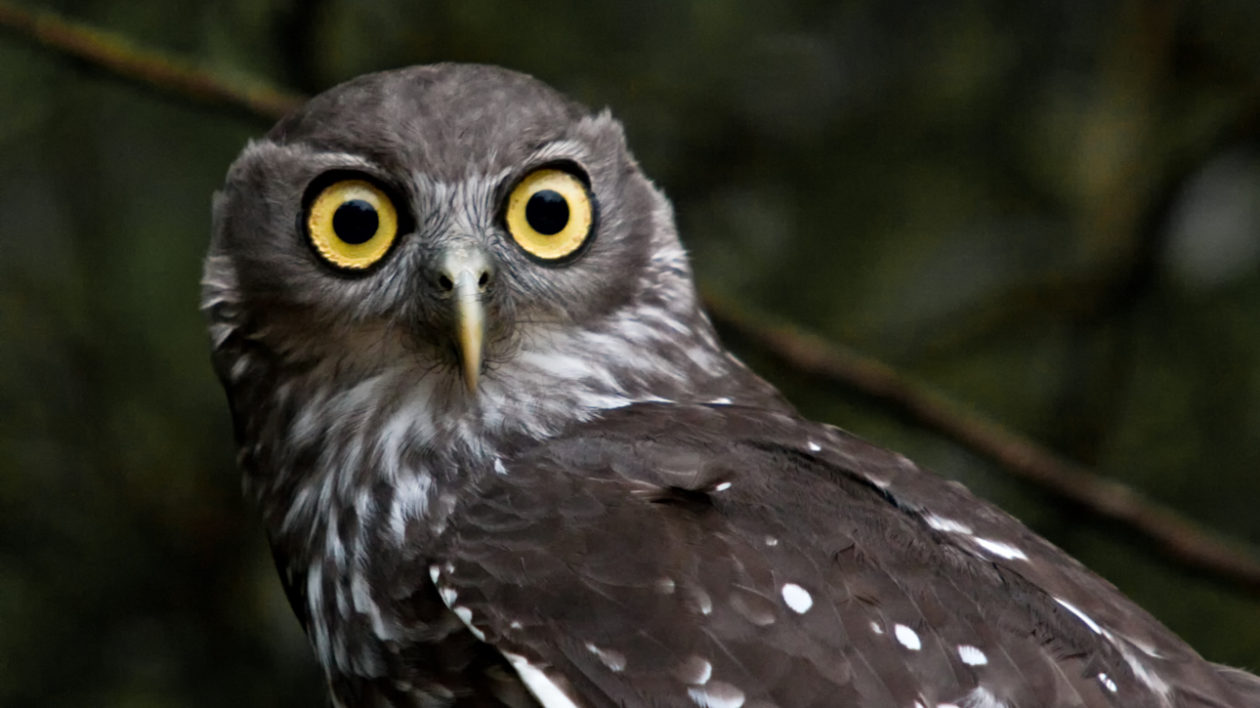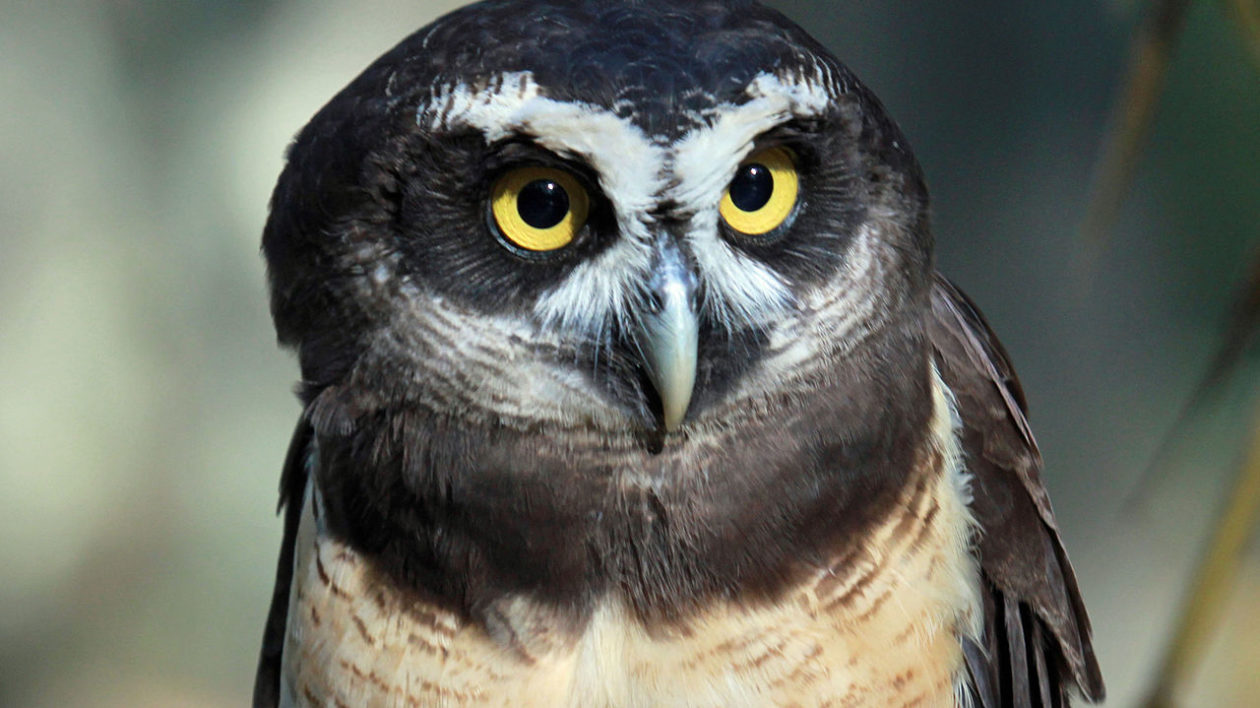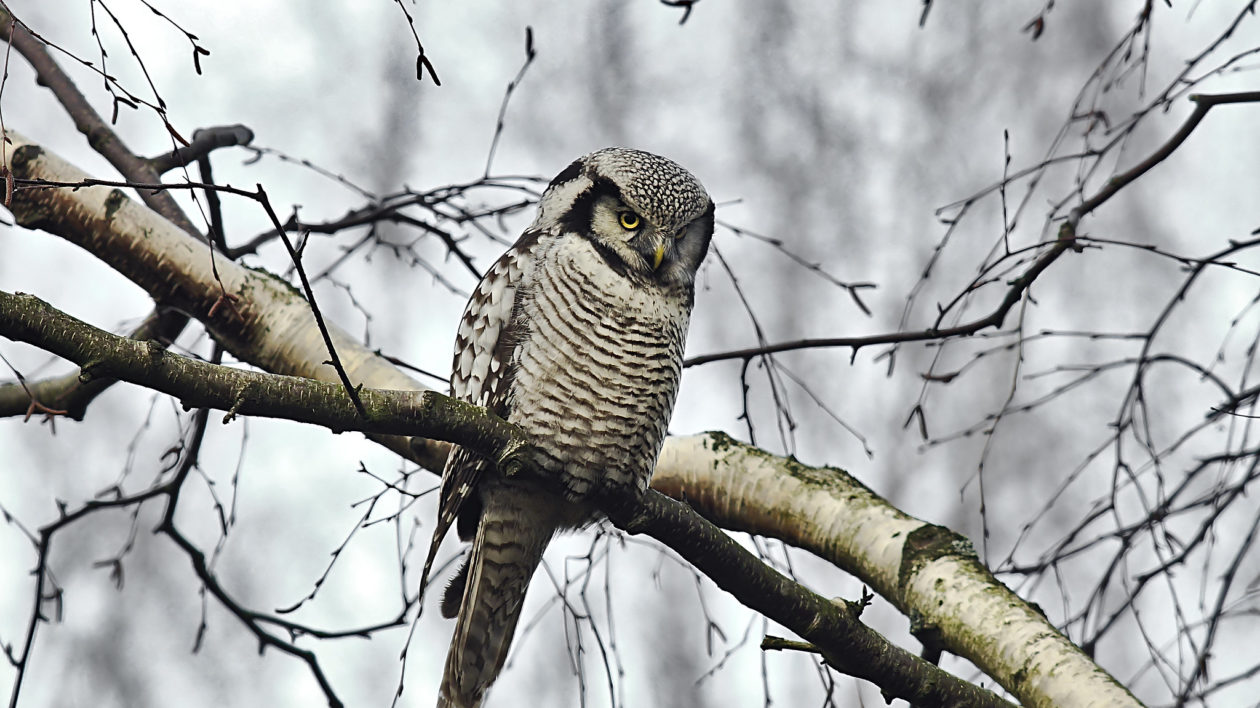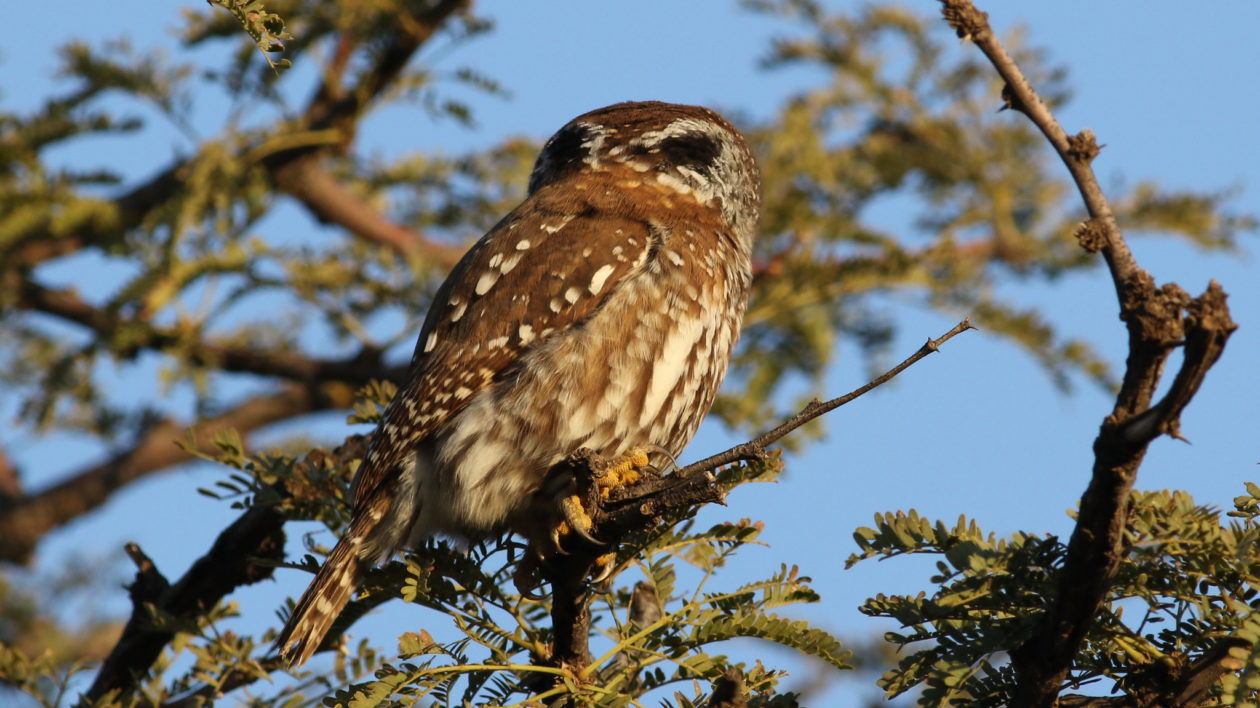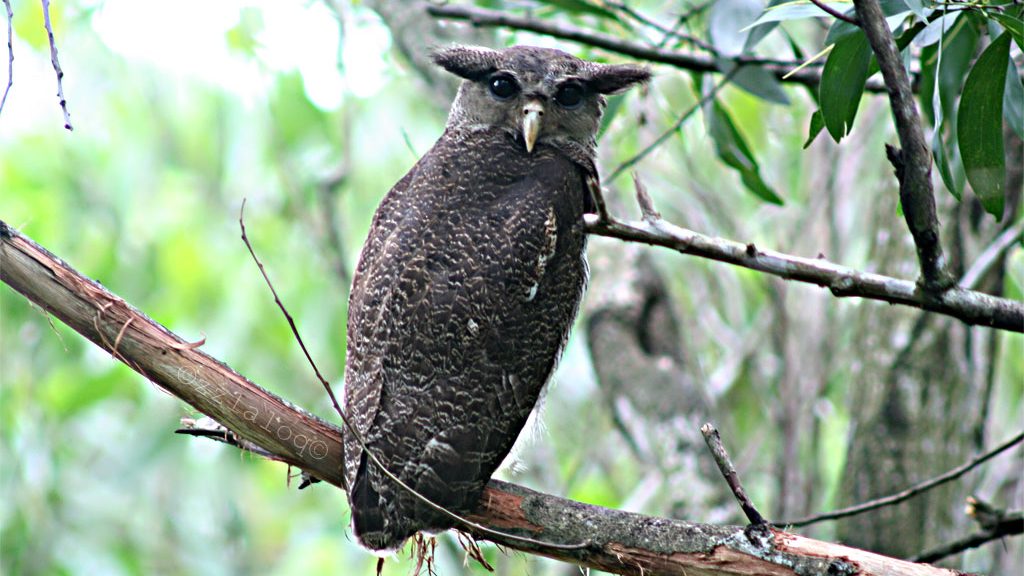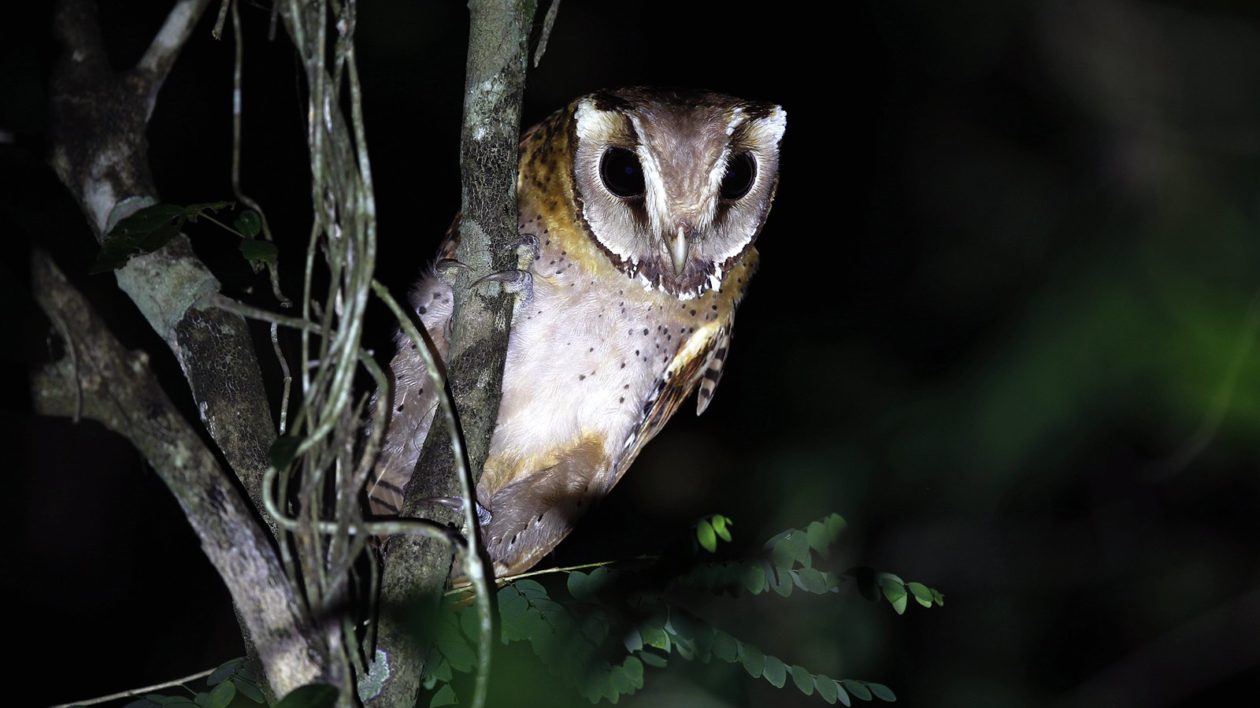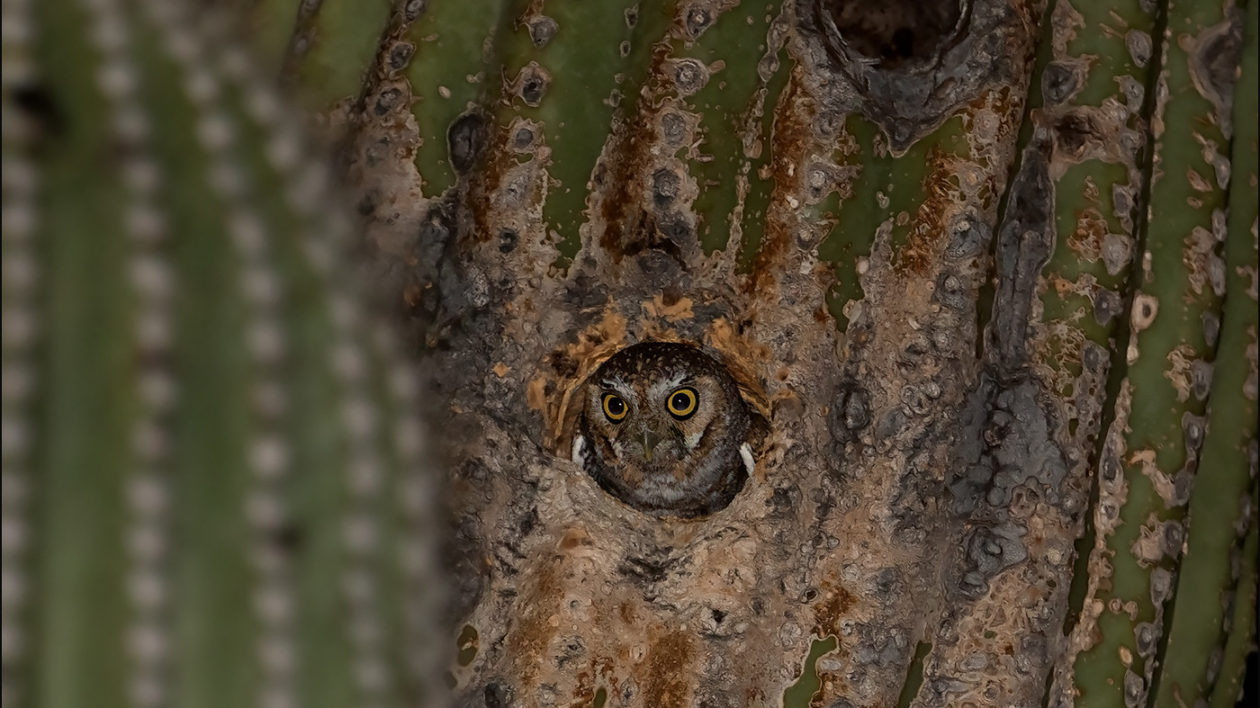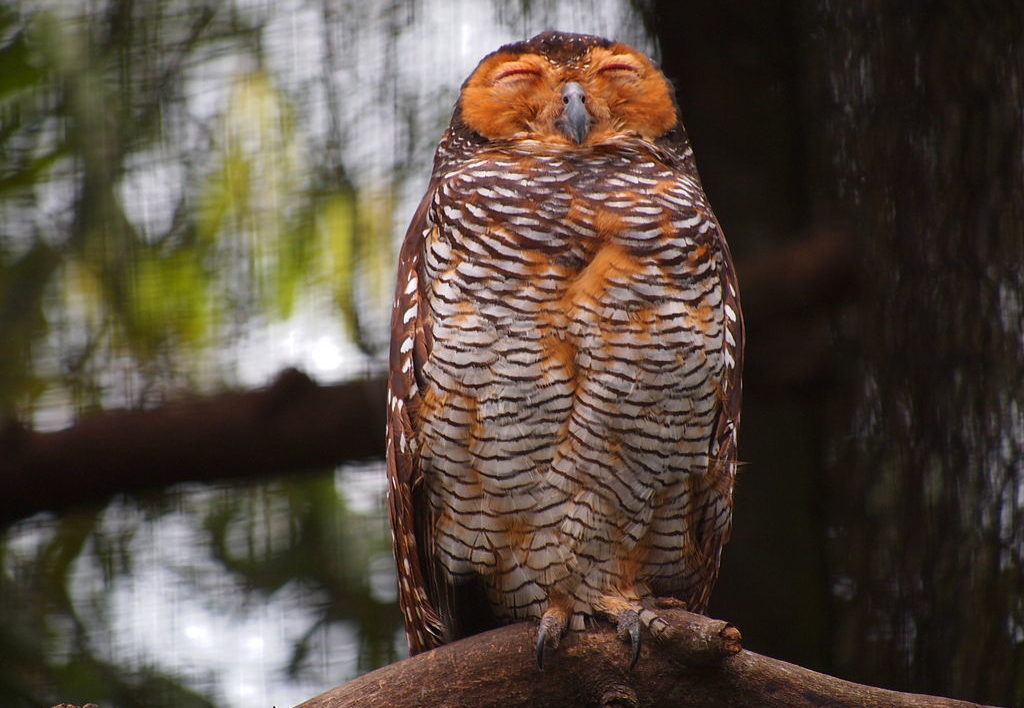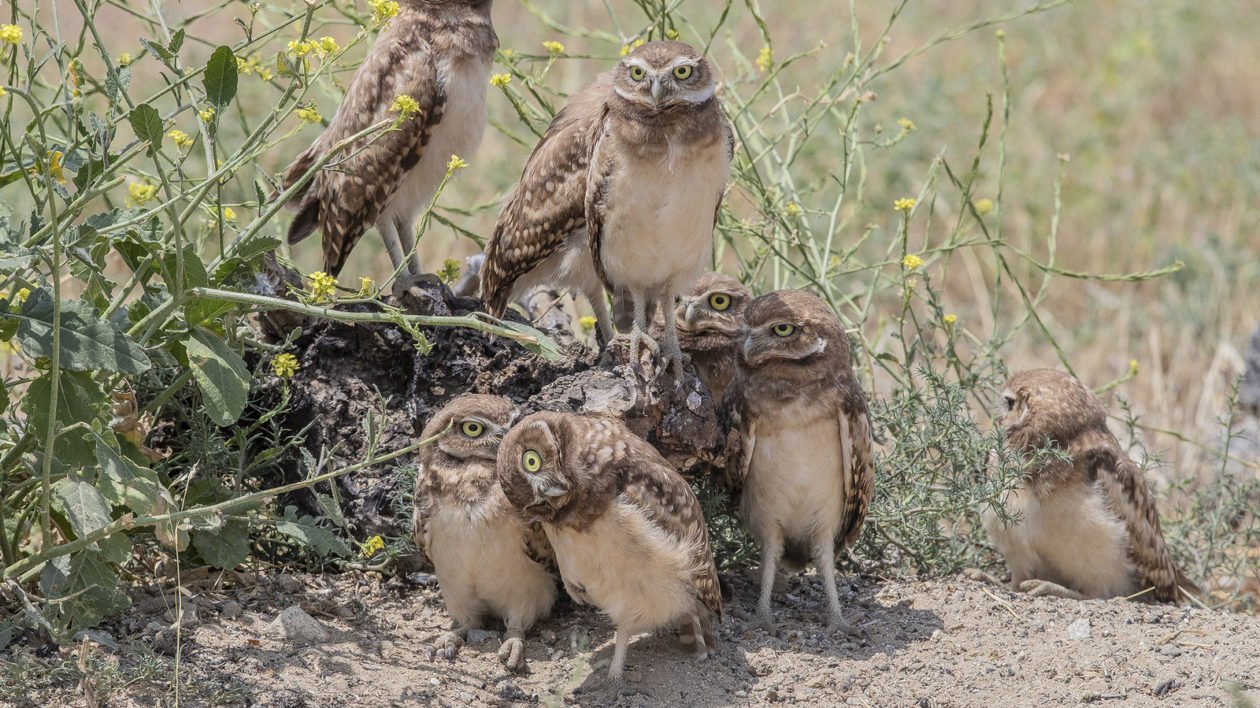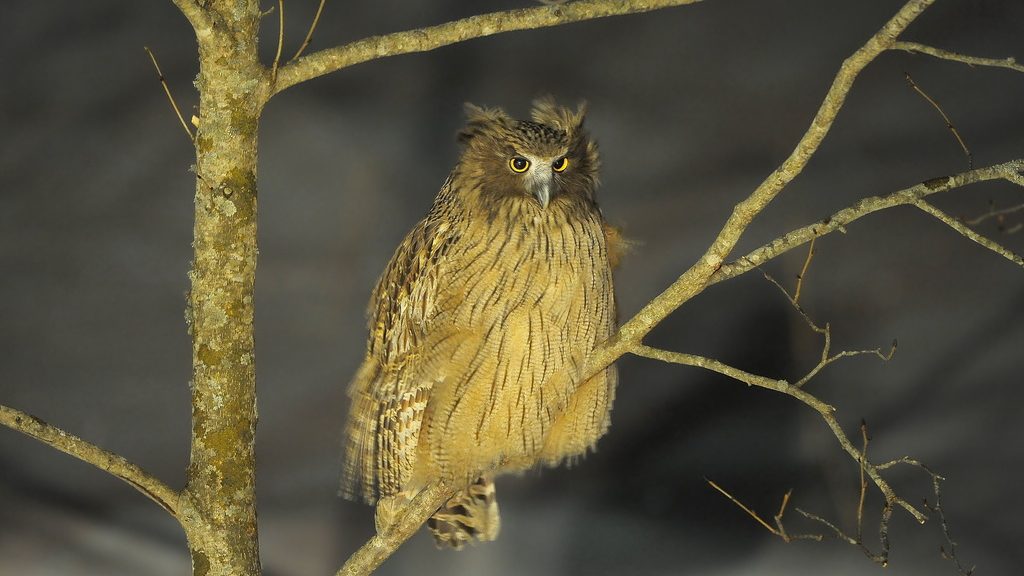
The Philippine scops owl (Otus megalotis ) is a common owl, endemic to the Philippines, belonging to the family of the typical owls Strigidae. Other common names include “Otus Whitehead”, “Whitehead scops owl” and “Luzon lowland scops owl”. Everett’s scops owl (Otus megalotis everetti) and Negros scops owls (Otus megalotis nigrorum) were formerly considered conspecific but are now classified as subspecies of Otus megalotis.
Appearance
The Philippine scops owl is a fairly small-to-mid-sized species of owl, but is arguably the largest true species of scops owl. Adults measure from measuring around 23 to 28 cm (9.1 to 11.0 in). Body mass can range variously from 125 to 310 g (4.4 to 10.9 oz), with females often considerably larger than males. A distinguishing feature of this owl is its large ears that are standing upright on its head. They also have big eyes that are dark in the center with a red/orange edge. In general, these owls are covered in dark brown feathers with dark streaks on them. Their ear tuffs also follow a similar pattern. Their forehead is whitish and they have a dark line around their facial disk. There are three subspecies of Philippine scops owl which show three variations in morphology. The smallest morph, Otus megalotis nigrorum, has a reddish brown color, no scapular line, and no feathers on its upper feet. The medium-sized morph, Otus megalotis everetti, also lacks a scapular line and feathers on its upper feet but it has a more greyish brown color. Finally, Otus megalotis megalotis, is the largest of all three varieties and also has a grey brown color but it shows a scapular line and feathers on its upper feet. Other morphological differences between the subspecies can be seen in the length of the tail, the wings, the culmen and the tarsus. These traits are longer in O. m. megalotis and are shorter in O. m. nigrorum.

There are no significant difference in morphology between male and female Philippine scops owls although female scops owls tend to be larger in general. The owlets however, present some contrast as they have fluffy rufous feathers. Once they reach the sub-adult age, they are black and greyish-white until they finally reach adulthood and turn brownish.
.jpg)
Habits and Lifestyle
Philippine scops owls are sedentary birds with a limited home range. The fact that different subspecies are found on different islands limits intraspecific competition and allows these birds to have a smaller distribution where all the necessary resources are available.
Diet and Nutrition
These carnivorous owls prey upon animals such as insects and small mammals. During nighttime, they perch in trees where the land is relatively open, which offers them a better view of the surrounding preys. They are ferocious feeders and specialize in tearing flesh. Their raptorial claws, curved bill and excellent hearing and sighting skill make them powerful predators. They have been observed to kill their victim by crushing its head, then breaking every other bone of the body to finally swallow the animal whole. This method has cost the lives of many juveniles who suffocate because the prey is too large to swallow. Philippine scops owls were also noticed to feed on spider species such as Heteropoda venatoria.

Mating Habits
Otus megalotis are often spotted alone but have also been seen in monogamous pairs. Not a lot of information is known about their reproduction but they are thought to breed throughout the year where females will lay 1 to 2 eggs annually. Sexual maturity is reached around the age of 2 but their lifespan is unknown. One juvenile with two adults have been witnessed multiple times which supports the theory that they are monogamous birds who display parental care from both the father and the mother.
They construct their nests in tree cavities but also among the roots of dead trees on the ground.


